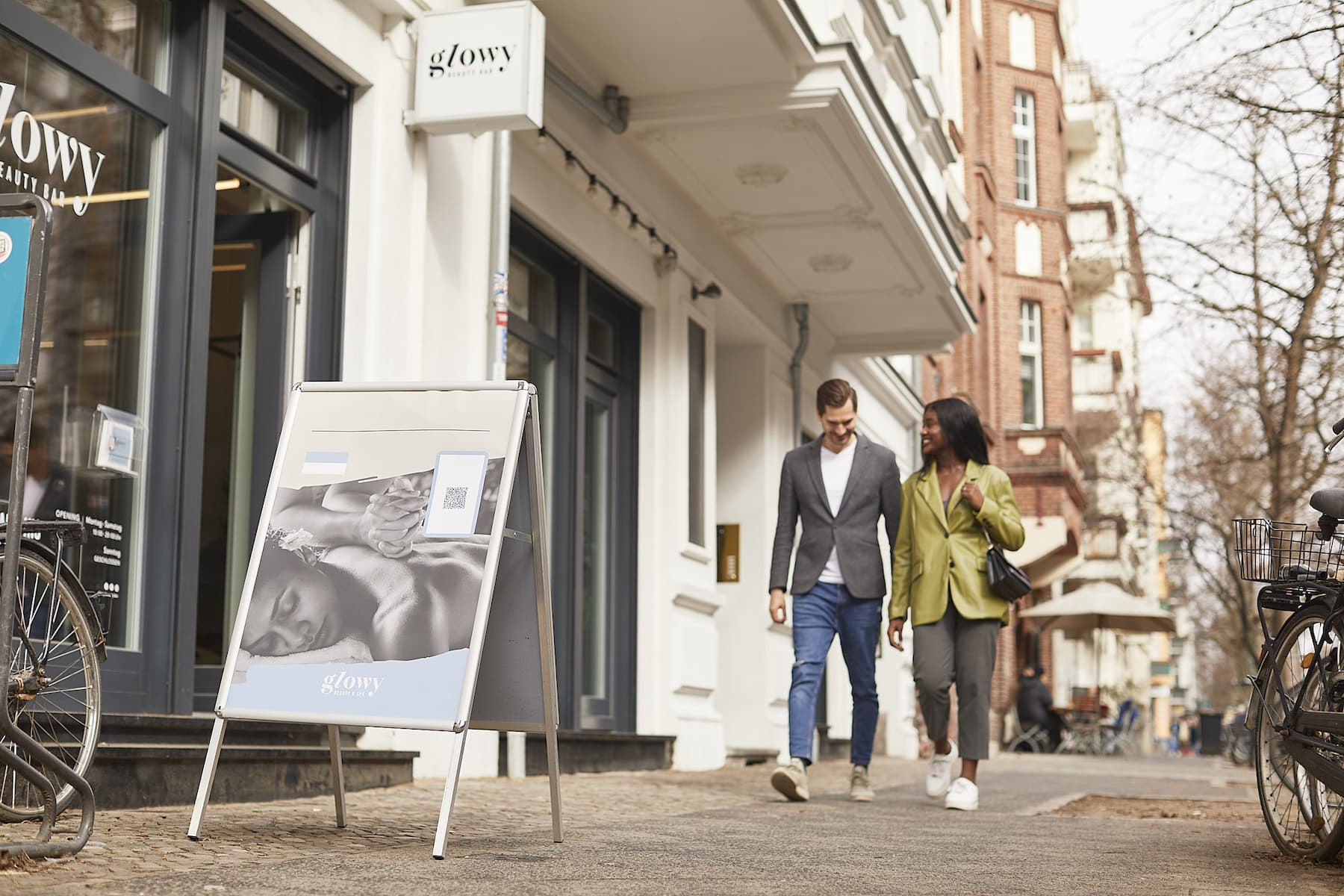When establishing your small business as a welcoming operation, it’s important to recognize how accessible signage plays a key role. Take the time to prioritize inclusivity. This way, you can cultivate both a positive environment and positive interactions with your business.
Whether in your brick-and-mortar location or out in the community, you want your signage to clearly tell prospective customers who you are, what you do and what you offer. And with thoughtfulness, empathy and some splashes of creativity, you can accomplish just that. It’s time to demonstrate you’re a business that supports the needs of any potential customer.
The importance of accessible signage
The U.S. Access Board offers specific guidelines for signage to comply with the Americans with Disabilities Act (ADA), the federal legislation that prohibits discrimination based on disability. The Access Board’s work helps to ensure that everyone can navigate buildings safely and effectively. For decades, ADA signage has empowered those with accessibility needs, such as the visually impaired and those using wheeled mobility aids, to feel welcomed and valued at restaurants, entertainment venues, fitness centers, retail stores and more.
The Access Board’s guidelines, however, generally apply to permanent spaces, such as room numbers or restrooms, as well as wayfinding, such as directional arrows, stairwell indicators or exit signs. Temporary signs like vinyl banners announcing an upcoming move to a new location, window posters detailing a special event or A-frame sidewalk signs announcing a sale are exempt from ADA regulations.
Still, you want to make sure you’re spreading the right message to all of your prospective customers. Designing your small business signage with inclusivity in mind enables you to identify your business as a welcoming, responsive operation that respects its customers. More inclusive signage can also boost your brand’s visibility and generate community goodwill.

5 tips for making your signage accessible
Although your marketing signage might not need to adhere to official ADA rules, you can nevertheless take cues from their guidance to design signage that is as vibrant and informative as it is accessible and inclusive. Here’s how:
1. Choose your colors wisely.
ADA guidelines suggest using contrasting colors, such as white on black or yellow on navy. Apply this same logic to your signs to ensure readability. When selecting colors for text, choose colors on opposite sides of the color wheel from your background color so the content stands out — while still staying true to your core brand colors.
2. Favor legibility with your font.
The ADA signage guidelines spell out rather specific rules for text, requiring sans serif fonts and uppercase letters, for instance. Although your signage might not need to be so precise, the general principle of selecting clean, intelligible fonts holds. You can browse a seemingly endless array of fun, whimsical fonts, but avoid choosing anything too ornate or eccentric. A crisp, straightforward font will be the most readable.
3. Give your text breathing room.
According to the ADA, “Character spacing, as measured between the two closest points of adjacent characters excluding word spaces, must be 10% to 35% of the character height.” You may not want to get that numerically detailed, but you certainly need to consider appropriate spacing. Give some breathing room between letters as well as words and borders, and be selective with the copy and imagery you include so content does not blend together. When it comes to clean, accessible signage, space is an ally.
4. Say it in a picture.

As the saying goes, “A picture is worth a thousand words.” That is why the ADA requires the use of established symbols to indicate important locations like stairways and restrooms. The visual offers immediate clarity. Similarly, signage with imagery can say something about your business, its mission and its values. Showing a photo of a wheelchaired patron getting her nails done at your salon or dining at your restaurant shows your business caters to its customers and makes the necessary accommodations to ensure a satisfying experience.
5. Get rid of glare.
ADA rules call for non-glare finishes, which minimize the impact of sunlight or artificial light on readability. A glossy finish on signage can reflect light and make reading a struggle. A matte finish will not change based on light, which makes it more consistently readable. When possible, choose a matte finish for your banners and posters.
Design your signage with accessibility in mind
Although you are not required to follow ADA guidelines with your temporary marketing signage, those rather prescriptive rules can help you create clean, clutter-free signage with key information on sales, events and special offers. Essentially, it emboldens, enriches and enhances your communication with customers.
Design your signage with accessibility and inclusivity in mind and follow some basic ADA-inspired signage principles, such as the use of contrasting colors, legible text and imagery. By doing so, you can create effective signage that demonstrates you are invested in your customers and committed to providing them a welcoming, friendly experience.